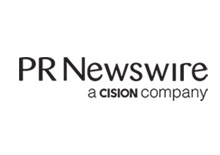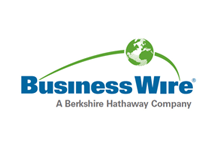Global Artificial Lift Industry Outlook 2020-2025 with Schlumberger, Baker Hughes Company, Weatherford, Halliburton, and Borets International Dominating - ResearchAndMarkets.com
The "Artificial Lift Market by Type (ESP, PCP, Rod Lift, Gas Lift, and Others); Mechanism (Pump Assisted (Positive Displacement, Dynamic Displacement), Gas Assisted)); Well Type (Horizontal, Vertical); Application (Onshore, Offshore); Region - Global Forecast to 2025" report has been added to ResearchAndMarkets.com's offering.
The global artificial lift market was valued at USD 7.6 billion in 2019 and is projected to reach USD 10.3 billion by 2025, at a CAGR of 5% during the forecast period.
Rising production from the existing oil & gas reserves as well as depleting reserves has driven the artificial lift market growth. Furthermore, shale developments and rising drilling activities are driving the market. However, declining oil demand from Europe due to the transition towards renewables is likely to hamper the growth of the artificial lift market.
The artificial lift market is dominated by a few major players that have an extensive regional presence. the leading players in the artificial lift market are Schlumberger (US), Baker Hughes Company (US), Weatherford (Switzerland), Halliburton (US), and Borets International (Russia).
The horizontal segment, by well type, is expected to be the largest and the fastest-growing market from 2020 to 2025.
The well type segment is categorized as horizontal and vertical, the two drilling methods adopted by companies. in 2018, horizontal wells accounted for about 70% of the wells drilled globally. This is majorly due to the increasing drilling activities in the Middle East and Europe, where horizontal drilling is more prominent.
More artificial lift operations are required in horizontal wells as compared to the vertical wells as the wellbore faces a higher challenge of water shutoffs and wax formation. North America is expected to hold the largest horizontal well type market, with continuous shale developments in lower-48 states in the US.
The offshore segment, by application, is expected to be the fastest-growing market from 2020 to 2025.
The offshore segment is expected to grow at the fastest rate during the forecast period. Artificial lift methods such as hydraulic pumping, gas lift, ESP, and PCP are most prominently used in offshore oil wells. the companies have been exploring the offshore locations for oil & gas production owing to the fact that offshore has huge untapped reserves. Thus, the offshore market is a more capital-intensive segment as compared to onshore.
According to the IEA, between 2019 and 2040, 2,500-3,000 offshore projects are likely to undergo decommissioning, as they have attained their operational lives. the Gulf of Mexico and the North Sea have the highest number of maturing shallow fields. Thus, such maturing shallow fields have created demand opportunities for artificial lift methods in the Gulf of Mexico and the North Sea regions.
North America: the largest and the third fastest-growing region in the artificial lift market.
North America is expected to dominate the global artificial lift market between 2020 and 2025. the North American oil production is rising drastically, with a growth rate of 5.0% from 2020 to 2025. Moreover, the continuous shale activities in the region are driving the demand for artificial lift operations. the upstream operators, such as Total, ExxonMobil, Chevron, and Apache, also have a significant presence in North America. This creates more opportunities for oilfield service providers to capture long-term contracts.
Key Topics Covered
1 Introduction
2 Research Methodology
3 Executive Summary
4 Premium Insights
4.1 Attractive Opportunities in the Artificial Lift Market
4.2 Artificial Lift Market, by Type
4.3 Artificial Lift Market, by Mechanism
4.4 Artificial Lift Market, by Well Type
4.5 Artificial Lift Market, by Application
4.6 Artificial Lift Market, by Region
4.7 North American Artificial Lift Market, by Application & Country
5 Market Overview
5.1 Introduction
5.2 Market Dynamics
5.2.1 Drivers
5.2.1.1 Continuous Shale Development Activities
5.2.1.2 Rising Investments in the Upstream Oil & Gas Sector
5.2.1.3 Heavy Oil Production
5.2.2 Restraints
5.2.2.1 Increasing Adoption of Renewable Energy in Europe
5.2.2.2 Lack of Skilled Labor
5.2.3 Opportunities
5.2.3.1 Redevelopment of Mature Oilfields
5.2.3.2 New Offshore Oilfield Discoveries
5.2.4 Challenges
5.2.4.1.1 Application of ALMS in Horizontal Wells
5.3 Supply Chain Overview
5.3.1 Key Influencers
5.3.1.1 Equipment Manufacturers
5.3.1.2 Service Providers
5.3.1.3 Oilfield Operators
6 Artificial Lift Market, by Type
6.1 Introduction
6.2 Rod Lift
6.2.1 Rising Demand For Handling Corrosive Gases during Artificial Lift Operations is Driving the Rod Lift Segment
6.3 Electrical Submersible Pump (ESP)
6.3.1 Demand For ESPs is Expected to Increase Due to the Rise in Operations in Directional Wells
6.4 Gas Lift
6.4.1 High-Efficiency Rate For High Gas to Oil Ratio Wells is Set to Boost the Demand For Gas Lift Systems
6.5 Progressive Cavity Pump (PCP)
6.5.1 Rise in Demand For Artificial Lift in Shallow Wells is Likely to Increase the Demand For PCPs
6.6 Others
7 Artificial Lift Market, by Mechanism
7.1 Introduction
7.2 Pump Assisted
7.2.1 Positive Displacement
7.2.1.1 Increasing Adoption of Rod Lift Pumps and PCPs in North American and the Middle East & African Regions is Likely to Drive the Positive Displacement Market
7.2.2 Dynamic Displacement
7.2.2.1 Rise in Multistage Drilling Operations Owing to Development in Shale Reservoirs Drives the Dynamic Displacement Segment
7.3 Gas Assisted
7.3.1 Increasing Adoption of Gas Assisted Systems Across Vertical Gas Wells is Likely to Drive the Segment
8 Artificial Lift Market, by Well Type
8.1 Introduction
8.2 Horizontal
8.2.1 Large Discoveries of Shale Reserves are Expected to Drive the Horizontal Well Segment in North America
8.3 Vertical
8.3.1 Maturing Vertical Oil & Gas Wells are Driving the Global Artificial Lift Market
9 Artificial Lift Market, by Application
9.1 Introduction
9.2 Onshore
9.2.1 Redevelopment of Mature Onshore Oilfields Along With Growing Shale Activities to Drive the Onshore Artificial Lift Market
9.3 Offshore
9.3.1 Maturing Shallow Oilfields are Driving the Offshore Artificial Lift Market
10 Artificial Lift Market, by Region
10.1 Introduction
10.2 North America
10.3 Europe
10.4 Asia-Pacific
10.5 South & Central America
10.6 Middle East & Africa
11 Competitive Landscape
11.1 Overview
11.2 Competitive Leadership Mapping
11.2.1 Visionary Leaders
11.2.2 Innovators
11.2.3 Dynamic Differentiators
11.2.4 Emerging Companies
11.3 Ranking of Players and Industry Concentration, 2019
11.4 Competitive Scenario
11.4.1 New Product Launches
11.4.2 Contracts & Agreements
11.4.3 Mergers & Acquisitions
11.4.4 Investments & Expansions
11.4.5 Partnerships, Collaborations, Alliances, and Joint Ventures
12 Company Profiles
12.1 Schlumberger
12.1.1 Business Overview
12.1.2 Products Offered
12.1.3 Recent Developments
12.1.4 SWOT Analysis
12.1.5 Publisher View
12.2 Weatherford International
12.3 Halliburton
12.4 Baker Hughes Company
12.5 NOV
12.6 Borets International
12.7 Apergy
12.8 Distributionnow
12.9 Jj Tech
12.10 Oilserv
12.11 Novomet
12.12 Accessesp
12.13 PCM Artificial Lift Solutions Inc.
12.14 Priority Artificial Lift Services
12.15 Camco
12.16 Valiant Artificial Lift Solutions
12.17 Middle East Oilfield Services
12.18 Epic Lift Systems
12.19 Maktoom Trading & Contracting Company
12.20 Production Lift Companies
For more information about this report visit https://www.researchandmarkets.com/r/u36isn
View source version on businesswire.com: https://www.businesswire.com/news/home/20200424005268/en/



